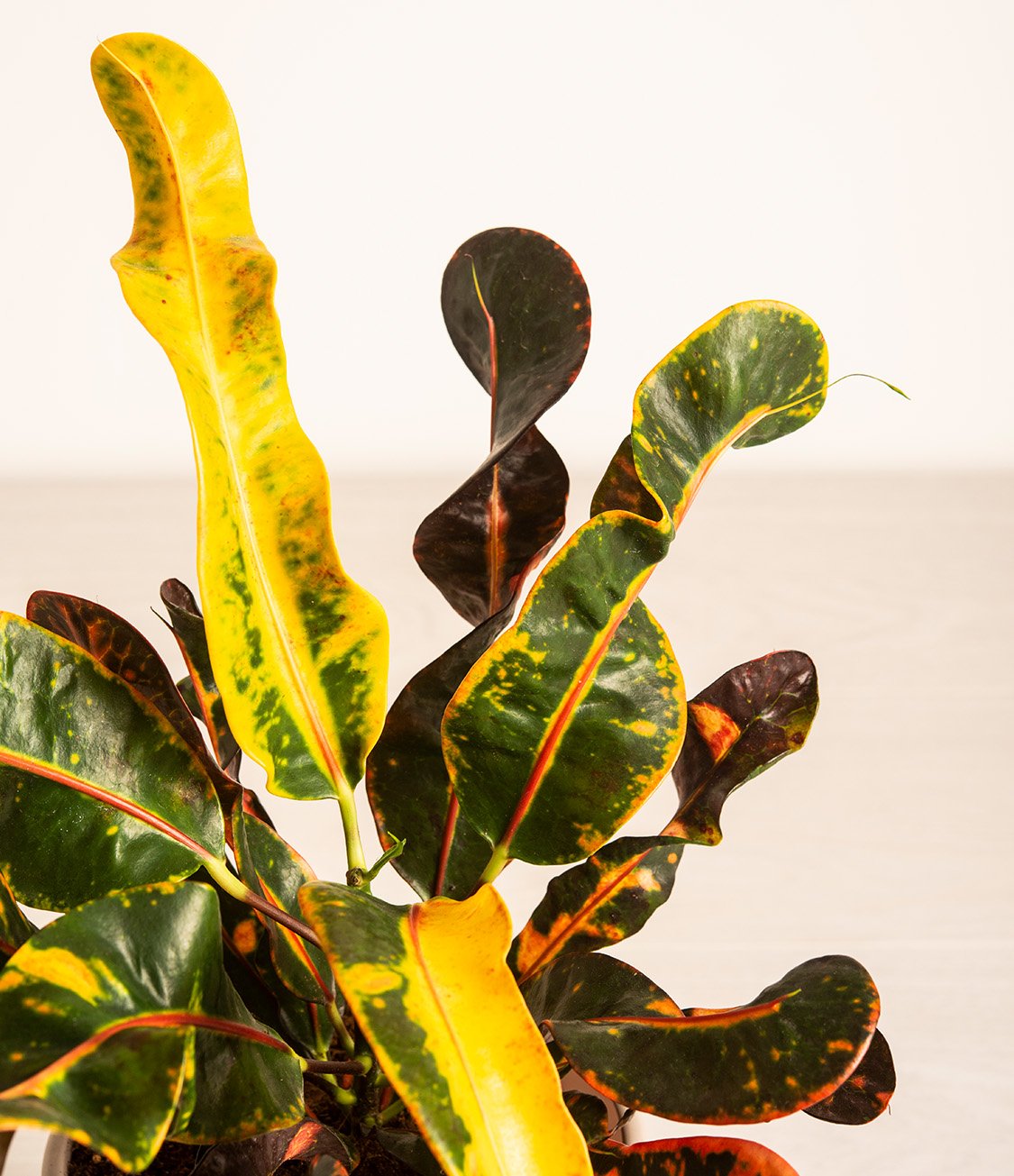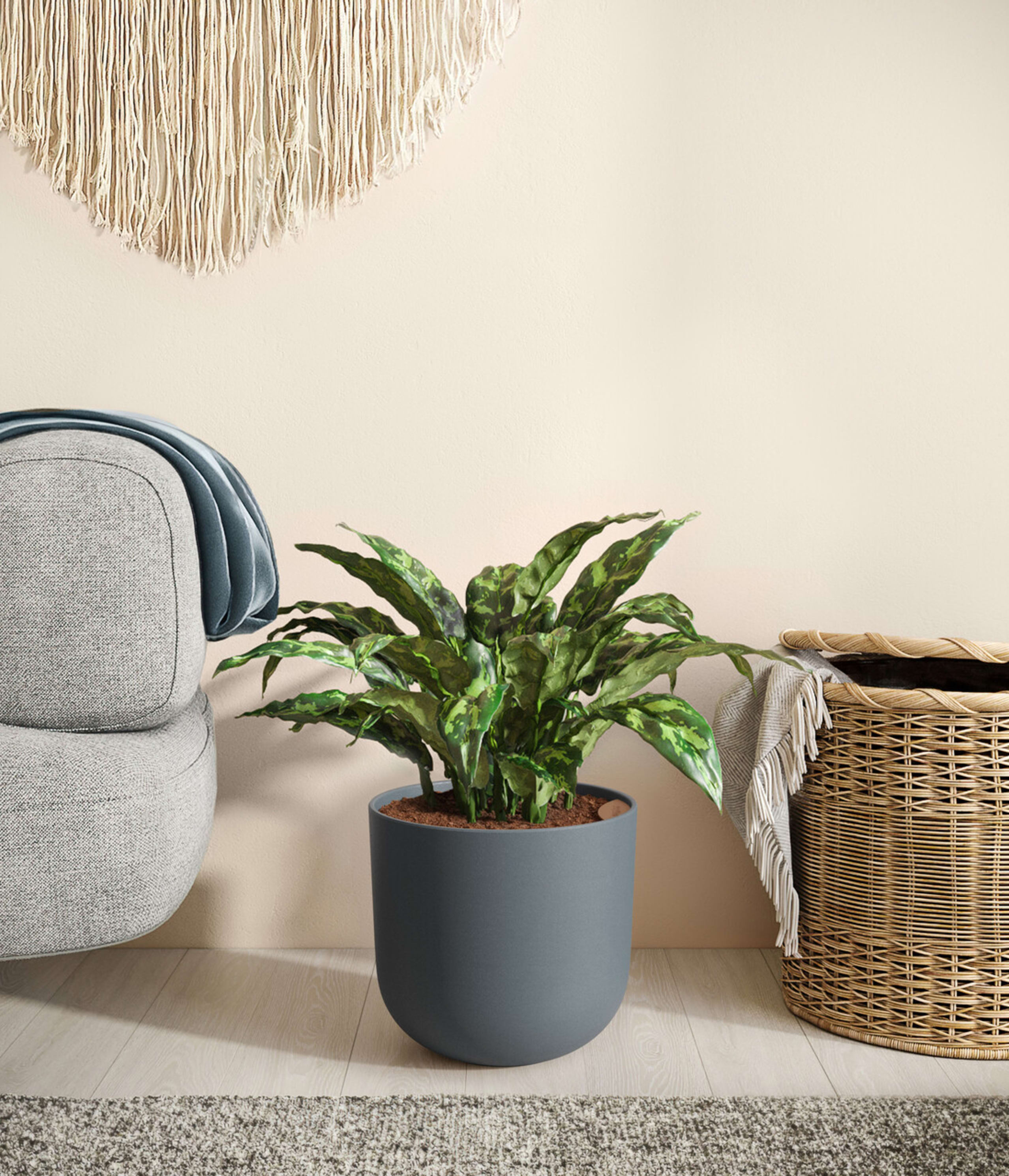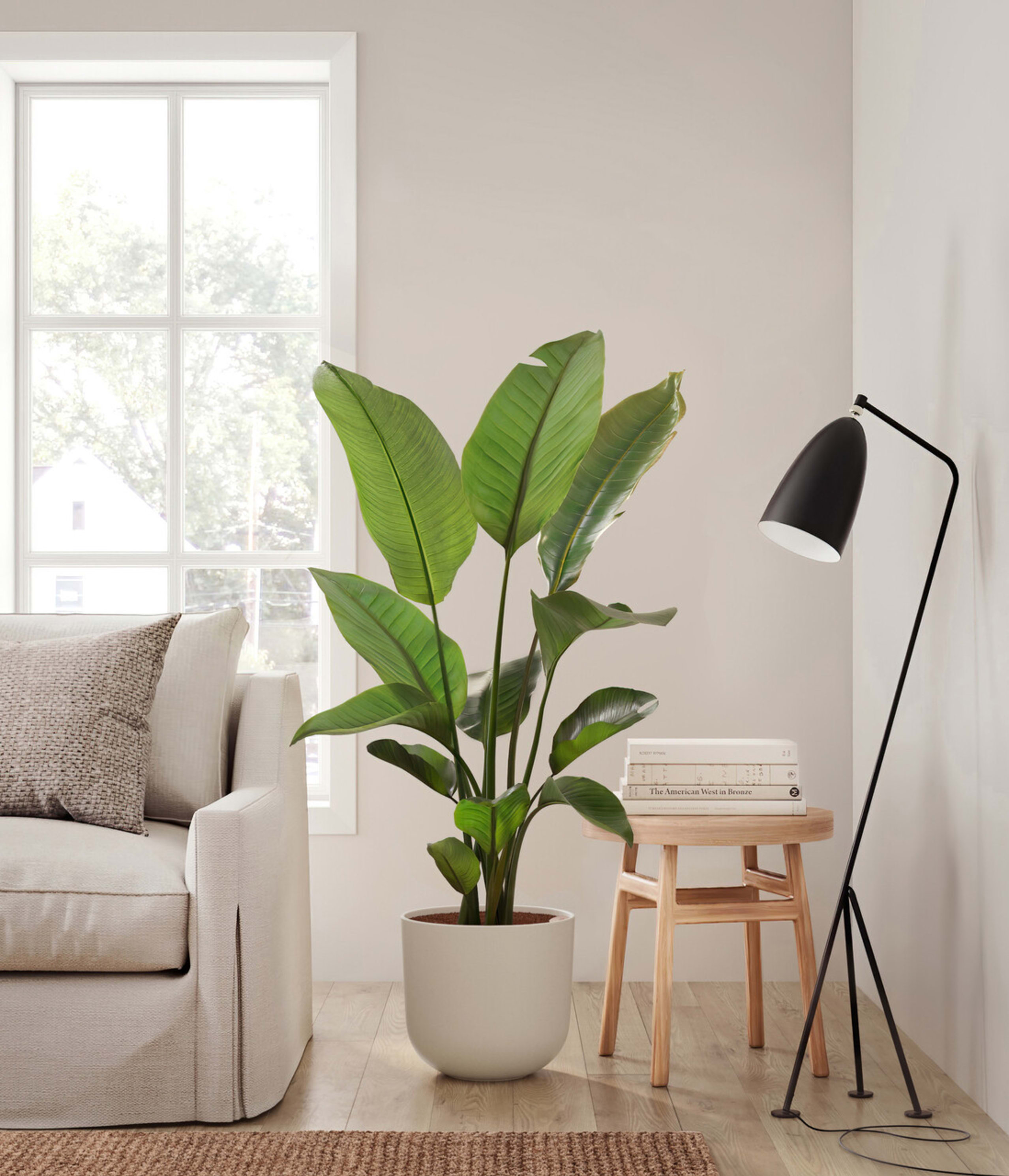How to care for Croton Mammy
About Croton Mammy
Croton Mammy, known scientifically as Codiaeum variegatum 'Mammy', is a vibrant tropical plant celebrated for its uniquely twisted leaves that showcase a kaleidoscope of colors including red, yellow, green, and purple. This Croton variety, with its glossy and curly foliage, adds a dramatic pop of color to any indoor space. Originating from the tropical forests of Southeast Asia and the Pacific Islands, the Croton Mammy thrives in warm and humid conditions, embodying the lush essence of its native habitat.
Other common names
- Mammy Croton
- Curly Croton
- Variegated Croton
- Indoor Croton
- Croton Mami
- Codiaeum variegatum 'Mammy'
How Often Should I Water My Croton Mammy
Watering your Croton Mammy is more an art than a science, requiring a balance that keeps the soil consistently moist but never waterlogged. With an easyplant pot, this balance is gracefully maintained through the self-watering system, which ensures the plant receives just the right amount of water. Just check the water reservoir once a month, fill it if empty - and you're all set.
Croton Mammy Light Needs
Croton Mammy grows best in a space with bright indirect light, where the sun rays are diffused, and can also adapt to spaces with bright direct light, where the sunlight streams inside directly. Avoid placing it in spaces with low light or spaces without natural sunlight.
Croton Mammy prospers under a regimen of bright sunlight, which is crucial for maintaining the vibrancy of its multicolored leaves. This tropical beauty thrives when placed near east or west-facing windows where it can bask in the gentle morning or late afternoon sunlight, receiving the light it craves without the risk of harsh midday rays that could potentially scorch its delicate foliage. The quality of light impacts not only the plant's health but also the intensity of its leaf colors.
Croton Mammy Plant Care
Croton Mammy is a tropical marvel, that thrives on consistency, and responds well to a regular care routine that caters to its unique requirements.
Regular dusting of your Croton Mammy's leaves not only enhances their glossy appearance but also optimizes their health, ensuring the plant can effectively photosynthesize and breathe. It's a simple step that goes a long way in maintaining your plant's stunning vibrancy.
The dynamic growth pattern of Croton Mammy is indeed a highlight of caring for this plant. Regularly rotating the pot by a quarter turn each month ensures balanced growth, preventing the plant from leaning excessively towards the light source. This habit also encourages an even development of the foliage, allowing each leaf to flourish and contribute to the plant's overall aesthetic.
In addition to these practices, consider the air circulation around your Croton Mammy. While it appreciates humidity, stagnant air can promote the development of pests and diseases. Positioning it in a place with gentle air movement can help mitigate these risks, contributing to a healthier plant environment.
By incorporating these care tips into your routine, you'll not only foster a thriving environment for your Croton Mammy but also enjoy the rewards of its spectacular display. Watching your Croton Mammy grow and transform is a fulfilling experience, reflective of the care and attention you invest in this vibrant addition to your indoor garden.
How Big Will My Croton Mammy Grow?
Embracing the full potential of your Croton Mammy's growth can transform any space into a vibrant showcase of nature's palette. This radiant plant, when given the proper care and conditions, can reach upwards of 3 to 4 feet in height and spread. Its growth journey is a spectacle, with each leaf unfurling in a burst of color and vitality. To encourage a robust and full-bodied appearance, consider the placement of your Croton Mammy carefully, allowing it room to stretch and showcase its dazzling foliage. Regular pruning not only maintains its shape but also invigorates the plant, prompting lush new growth. As you nurture and observe its development, your Croton Mammy will become a living testament to the care and love you invest, growing not just in size but as a central piece of your home’s natural beauty.
Temperature & Humidity
The Croton Mammy, Originating from the tropical forests of Southeast Asia and the Pacific Islands, prefers the warm embrace of consistent temperature and humidity that mimic its native tropical climates. Thriving in conditions that hover around 70°F (21°C), it's important to shield it from the chill that falls below 60°F (15°C). This plant revels in humidity, making spaces like well-lit kitchens or bathrooms its stage. If your home struggles to hit these humidity levels, consider using a pebble tray or a humidifier as backup dancers, supporting your Croton Mammy in putting on its best performance.
Are Croton Mammy Plants Toxic for Pets & Kids?
While the Croton Mammy is a visual treat, it's not one for taste. This plant is toxic when ingested, with its sap capable of causing irritation and discomfort to both pets and children. It's best to place it in a spot where its beauty can be admired from a safe distance, ensuring the well-being of your curious companions and little explorers.
Troubleshooting Common Problems with Croton Mammy
Keeping your Croton Mammy vibrant and thriving is usually straightforward, but like any plant, it might occasionally need a little extra TLC. If you notice any changes in its appearance, there are easy fixes to common concerns;
If your Croton Mammy starts shedding leaves, it's often just adjusting to its new environment. Ensure it's not exposed to drafts and that you're consistent with your watering routine, letting the reservoir empty before re-filling it.
A dimming in the leaf color of your Croton Mammy may suggest your plant craves more light. Simply move it to a brighter spot where it can enjoy indirect sunlight to restore its vivid hues.
Pests are rare but manageable. If you spot any, such as a white substance on the connections of the leaves, or spider-webs on the leaves' edges - a gentle wipe with a soapy water solution or an application of neem oil will keep your plant happy and healthy.
With these simple adjustments, your Croton Mammy will continue to flourish, bringing its unique splash of color to your space without any hassle.
Frequently Asked Questions about Croton Mammy Plant
- How do you take care of a croton mammy?
Caring for a Croton Mammy involves placing it in bright, indirect sunlight, ensuring the soil remains moist but well-drained, and maintaining a warm, humid environment around it. Regular dusting of the leaves and rotating the pot contribute to even growth. Utilizing a self-watering pot, like an easyplant, simplifies meeting its watering needs effectively.
Mammy Crotons can grow up to 3-4 feet tall and wide. Their growth rate and final size depend on the care and environment they're provided, with regular pruning helping to manage their shape and encourage bushier growth.
Do crotons like sun or shade?
Crotons prefer bright, indirect sunlight. They thrive in environments where they can be exposed to plenty of light without the harshness of direct sun, which can scorch their leaves. A spot that receives filtered sunlight, like near an east or west-facing window, is ideal for Crotons.
- How big do Mammy crotons grow?
Mammy Crotons can grow up to 3-4 feet tall and wide. Their growth rate and final size depend on the care and environment they're provided, with regular pruning helping to manage their shape and encourage bushier growth.
Do crotons like sun or shade?
Crotons prefer bright, indirect sunlight. They thrive in environments where they can be exposed to plenty of light without the harshness of direct sun, which can scorch their leaves. A spot that receives filtered sunlight, like near an east or west-facing window, is ideal for Crotons.
- Do crotons like sun or shade?
Crotons prefer bright, indirect sunlight. They thrive in environments where they can be exposed to plenty of light without the harshness of direct sun, which can scorch their leaves. A spot that receives filtered sunlight, like near an east or west-facing window, is ideal for Crotons.

 Small Plants
Small Plants Medium Plants
Medium Plants Plants Collections
Plants Collections Large Plants
Large Plants Huge Plants
Huge Plants